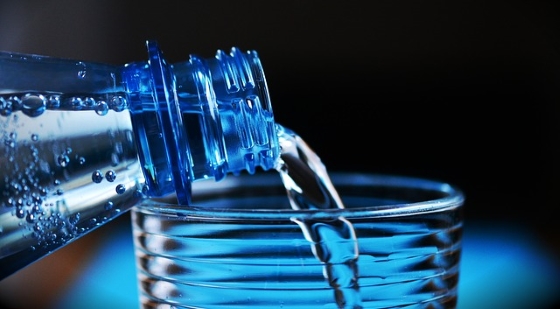Runners: Afraid of Dehydration? Sick of Getting Waterlogged? Read This

There is a simple way for runners to avoid dehydration and to avoid getting waterlogged.
First, you must understand what dehydration is. Second, it will help to learn why hydrating a lot became the thing for runners to do. Third, you ought to know how common it is for runners to get waterlogged. Fourth, you should learn about the real dangers of hydrating too much. Fifth, and like in the story of the three bears, you need a simple, “just right” approach to hydration.
What is dehydration?
Many runners use the term “dehydration” in a casual way.
- They may use it to refer to lots of sweating during a run.
- They may use it to refer to drinking less water than what others told them they should drink.
- They may use it to refer to the weight lost during a run.
WebMD defines dehydration in a simple way.
“With dehydration, more water is moving out of our cells and bodies than what we take in through drinking.”
Dehydration symptoms can vary from mild, such as a dry mouth, to severe, such as the inability to sweat.
Why did hydrating a lot become the thing to do?
Runners share a lot of advice with one another about how to avoid injuries. One popular tip is to make sure to hydrate before, during, and after a run. Although this advice is well-intentioned, it confuses mild dehydration with severe dehydration.
I call this advice the “hydrate no matter what” bandwagon.
- Unfortunately, some companies jumped long ago onto the hydrate-no-matter-what bandwagon.
- Others are not on it, but runners buy their hydration products because of the advice.
Dr. Tim Noakes wrote Waterlogged: The Serious Problem of Overhydration in Endurance Sports. Noakes refers to this bandwagon as “drink until you can’t take another sip” hydration.
How common is it to get waterlogged?
My group training program does not provide a water stop until eight miles into a long run. Granted, one reason is that program organizers expect participants to carry hydration. Another reason is that more frequent stops would make the logistics too complex. But, a third reason is that program organizers want to avoid waterlogging participants.
In contrast, many race organizers prefer to err on the side of overhydration. And, I am among many runners who have gotten that sloshing feeling from drinking at every water stop.
So, although waterlogging may not occur while training, it can occur often in races. For example, many races have a water stop or aid station every 1.5 miles or 2 km. In contrast, Noakes advises marathons and longer races to limit the frequency to every 5 km.
What else happens when I hydrate too much?
If getting a sloshing feeling were the only danger from overhydration, then we all might put up with it.
Noakes dedicated Waterlogged in this way:
“This book is dedicated to the memory of Cynthia Lucero, PhD, and all those who have died from the encephalopathy caused by exercise-associated hyponatremia.”
As WebMD explains,
“If the sodium in your blood is too low, you have a condition called hyponatremia.”
What is exercise-associated hyponatremia, also known as EAH? It’s a drop in your blood’s sodium concentration associated with overhydration during exercise.
Your body has exquisite mechanisms for maintaining its blood-sodium concentration. When you overhydrate, you can crash these mechanisms.
- Mild cases of hyponatremia may include nausea and vomiting.
- Severe cases of hyponatremia may include confusion and muscle cramps.
- Extreme hyponatremia can kill you. According to Noakes, this is what happened to Cynthia Lucero in the 2002 Boston Marathon.
Would ingesting a sports drink with some added sodium chloride prevent hyponatremia? Noakes answers this in Waterlogged.
These sports drinks “did not influence the extent to which the blood sodium concentrations fell in those who drank to excess during the race.”
In other words…
[Tweet “Sports drinks with some added salt will NOT prevent hyponatremia when you overhydrate.”]
So, how much SHOULD I drink?
Waterlogged is over 500 pages long but well worth the read. Here’s how I’d summarize the book’s findings.
- Yes, dehydration is dangerous.
- But, dehydration is rare among runners.
- Runners face a far greater risk of overhydration.
- This can lead to exercise-associated hyponatremia.
- EAH can kill you.
If I were to summarize the book’s advice for runners, then it would be this simple, “just right” advice:
[Tweet ” Drink to thirst, to avoid dehydration AND to avoid getting waterlogged.”]
What next?
By drinking to thirst instead of to what too many recommend, you will be a happier, safer runner.
Now you know how to avoid injury from overhydration. To learn other ways to avoid injury, check out Injury-Avoidance Habits for First-Time Marathoners and Half-Marathoners. It’s not only for first-timers; it can help veterans, too.
Interested? Click here:
Image Credit: Pixabay
